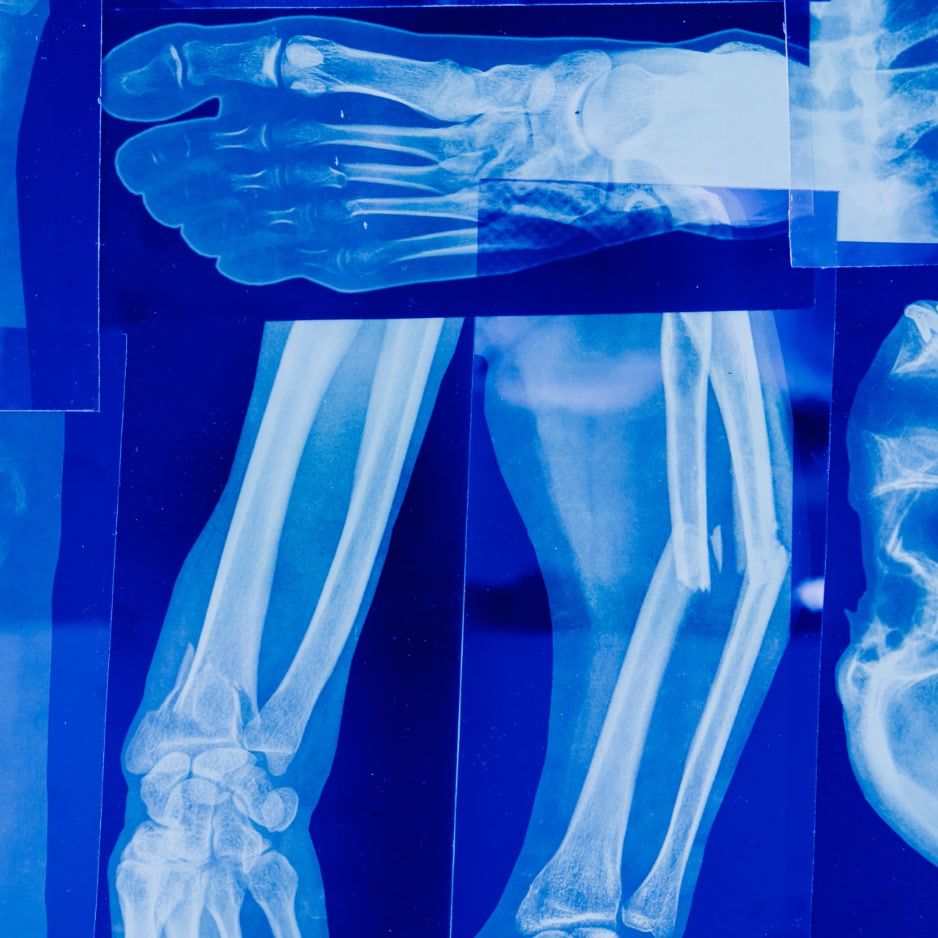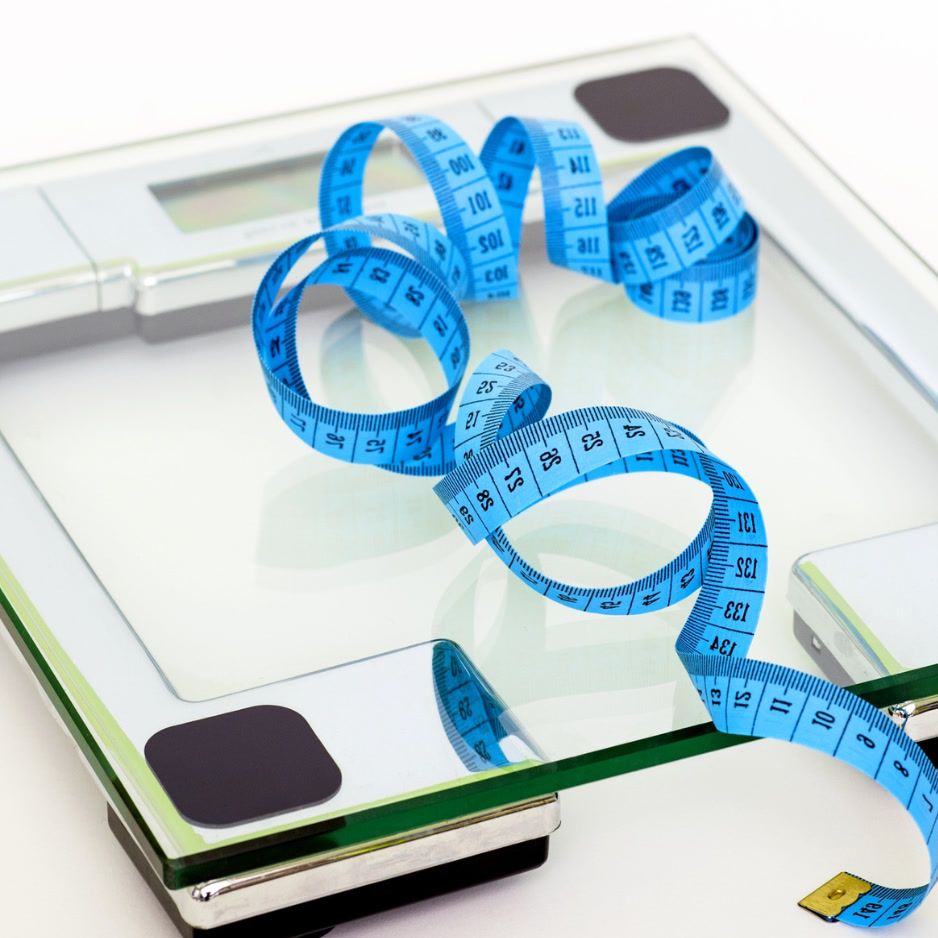Carb Counting: Guide to Labels, Portions & Ratios

Carb Counting: A Guide to Labels, Portions & Ratios
Looking for a simple, trustworthy way to count carbs? Here’s the quick answer:
- Step 1: Check the serving size on the Nutrition Facts label (see MedlinePlus label guide).
- Step 2: Use the number next to Total Carbohydrate — it already includes sugars and fiber (per MedlinePlus).
- Step 3: Multiply by how many servings you’ll eat. Aim for a consistent amount of carbs per meal (per the CDC) or match insulin using your personalized ratio if you use mealtime insulin (per the ADA).
Key Takeaways
- One carbohydrate “choice” ≈ 15 g and is a handy building block for meal planning (CDC).
- Use the label’s “Total Carbohydrate.” Start with serving size, then multiply as needed (MedlinePlus).
- Plate Method = low‑effort structure. When you don’t want to weigh or log, it keeps portions balanced (CDC).
- Advanced counting = insulin‑to‑carb ratios + corrections. Best done with your clinician’s guidance (ADA).
1) Carb Counting Basics: What Foods Contain Carbohydrates?
Carbohydrates are found in grains, starchy vegetables, beans, fruit, milk/yogurt, and sweets. They break down into glucose and raise blood sugar. Fiber does not raise blood sugar and contributes to good health (CDC; MedlinePlus). Because carbohydrates affect blood sugar more than protein or fat, tracking grams helps you match mealtime insulin or keep portions steady if you’re not using insulin (ADA).
2) How to Read Labels for Carb Counting (with examples)
On packaged foods, start with Serving Size, then go straight to Total Carbohydrate. That number already includes sugars and fiber—so for carb counting, use it directly (MedlinePlus).
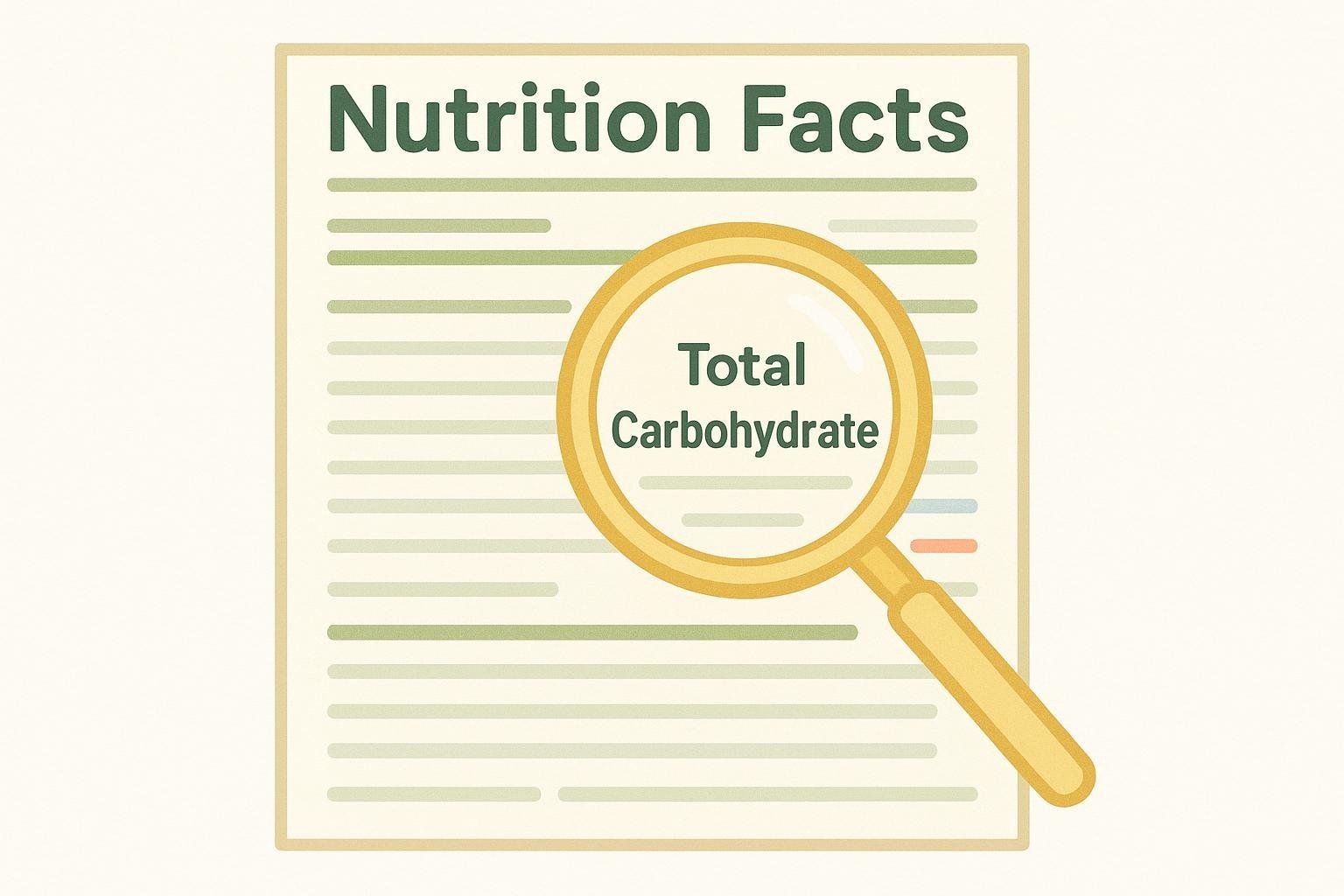
Label walkthrough
- Serving size: If a granola bar’s serving size is 1 bar and Total Carbohydrate = 22 g, one bar = 22 g carbs. Two bars = 44 g.
- Multi‑serving packages: If a canned soup lists 2 servings per can and 18 g carbs per serving, the whole can = 36 g.
- Fiber note: Some advanced plans subtract fiber in very high‑fiber foods. If your clinician hasn’t told you to do that, stick with the label’s Total Carbohydrate for simplicity (MedlinePlus).
Pro tips
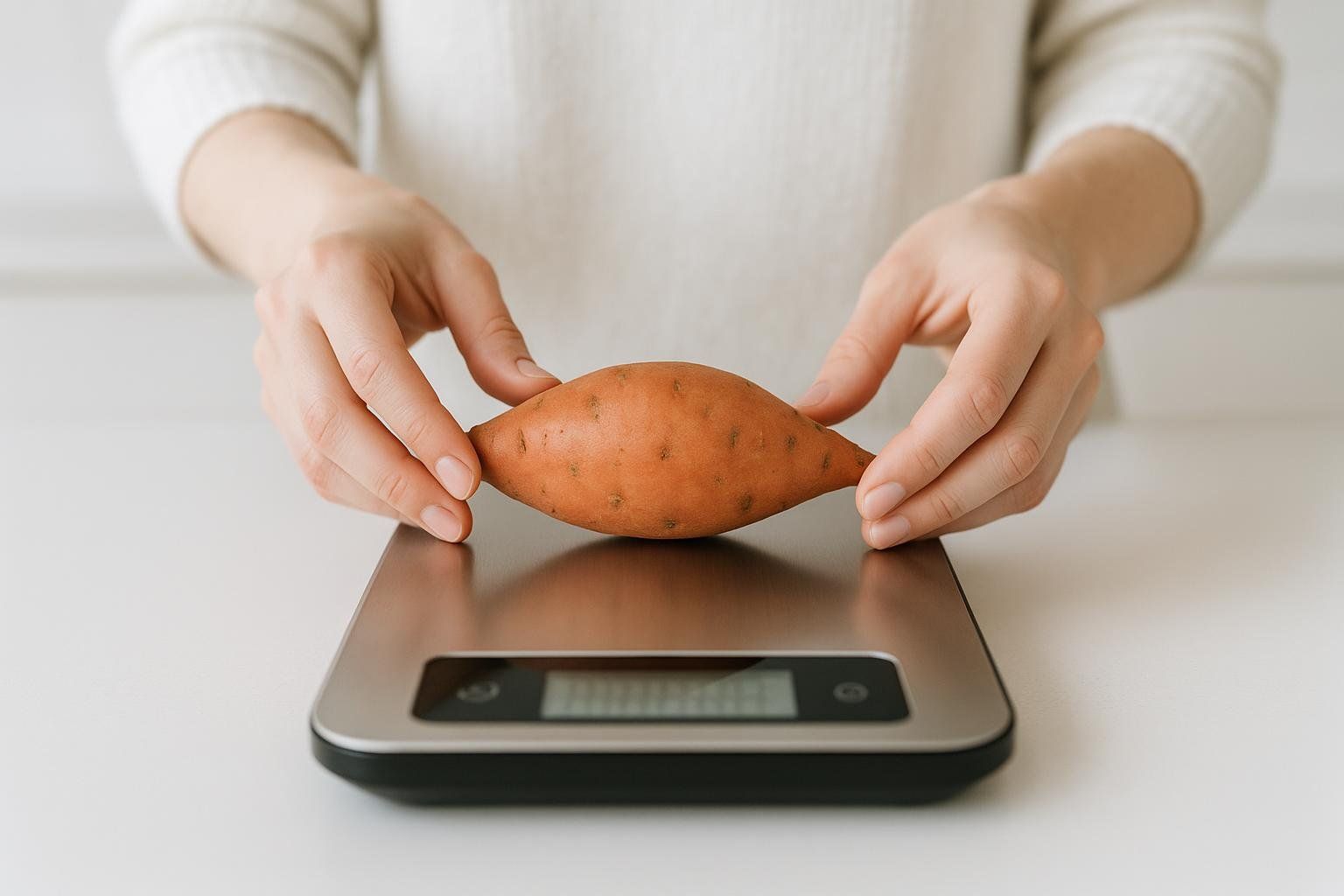
- Calibrate your eyes: Weigh/measure at home for a week.
- Save time: Store frequent foods in your tracking app.
- No label? Use a verified database (e.g., USDA FoodData Central) or a reputable list (see the ADA’s carb counting explainer).
3) How to Count Carbs Without a Label
When there’s no Nutrition Facts panel (restaurant meals, potlucks, homemade dishes), use this three-part method.
- Use 15‑gram “carb choices” as anchors. Many educators teach that 1 carb choice ≈ 15 g (CDC).

Grains & starches (~15 g each):
- 1 slice bread (about 1 oz)
- 1/3 cup cooked pasta or cooked long‑grain rice
- 1/4 cup cooked short‑grain rice
- 1/2 cup cooked oatmeal
- 3 oz baked potato (small)
- 3 cups plain popcorn
- 1 small tortilla (6‑inch)
Fruits (~15 g each):
- 1/2 cup canned fruit (in juice)
- 1 cup berries or melon
- 2 Tbsp dried fruit
Vegetables & legumes (~15 g each):
- 1/2 cup beans, peas, or corn
Dairy (~15 g each):
-
1 cup milk or soy milk
-
6 oz (3/4 cup) plain or light yogurt
-
Deconstruct mixed dishes. Break the meal into components (e.g., rice, beans, corn, tortillas) and estimate each piece using the 15‑gram references or a verified database. For navigating chain restaurants, our Healthy Fast Food guide offers additional strategies. Example: a burrito bowl could be counted as about 1 cup rice (~45 g) plus 1/2 cup beans (~15 g) for roughly 60 g carbs total.
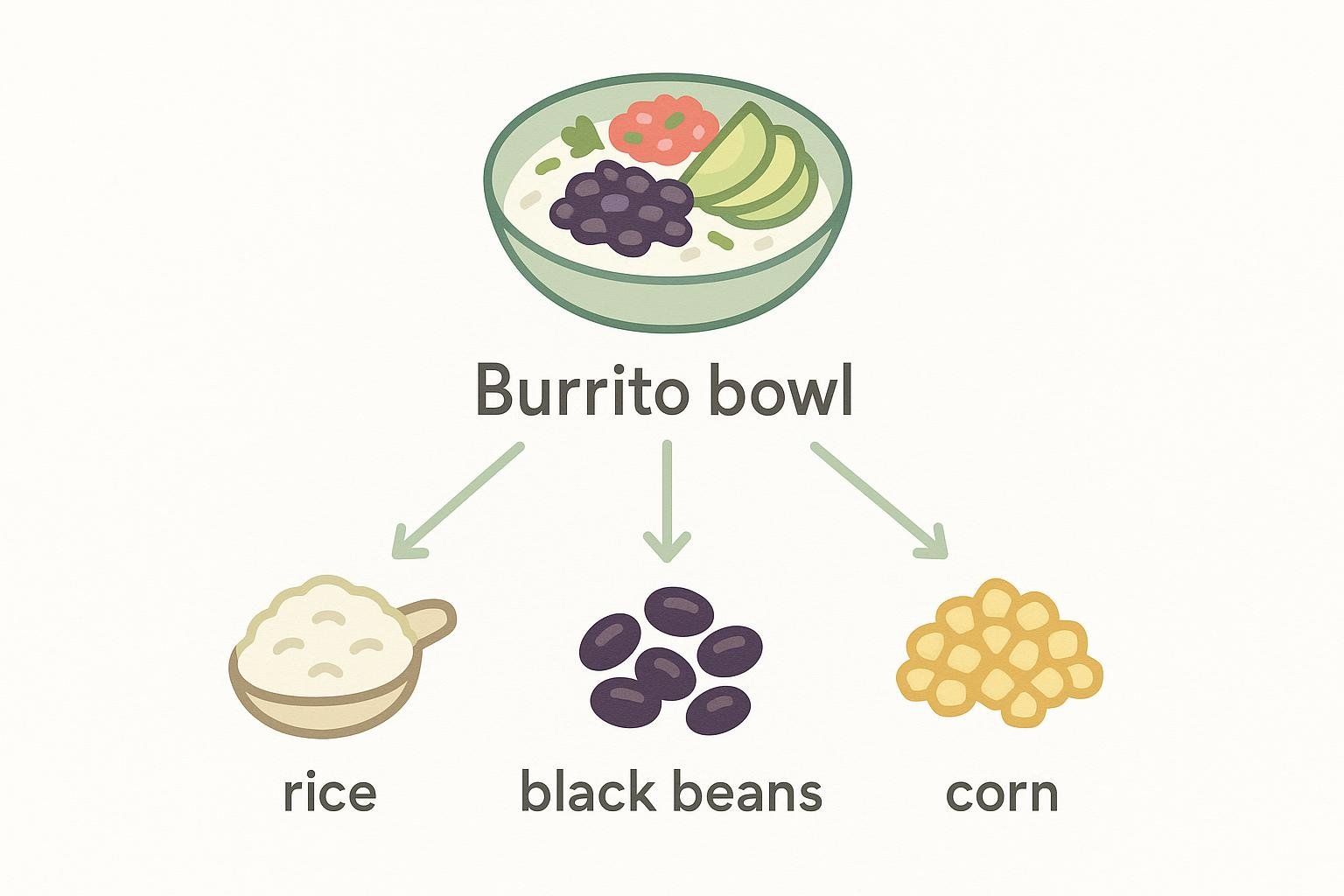
-
Use the Diabetes Plate Method for a quick visual. On a 9‑inch plate, fill 1/2 with non‑starchy veggies, 1/4 with lean protein, and 1/4 with carb foods (grains, starchy veg, fruit, or dairy). This naturally limits carb portions and keeps meals balanced (CDC).
Hand‑size portion guides:
- 3 oz meat/fish ≈ your palm
- 1 cup ≈ your fist
- 1–2 oz nuts/pretzels ≈ cupped hand
- 1 Tbsp ≈ thumb tip
Restaurant tip: On oversized portions, split the starch, double veggies, and choose grilled proteins.
4) Advanced Carb Counting: Ratios, Corrections, and Glycemic Impact
If you use mealtime insulin, advanced carb counting matches your dose to the meal’s carb grams using a personalized insulin‑to‑carb ratio (ICR). Many people also use an insulin sensitivity factor (ISF) to correct for pre‑meal highs. Work with your endocrinologist or CDCES to set and adjust these numbers. Advanced counting is a cornerstone of intensive insulin therapy in type 1 diabetes and can improve A1c and flexibility (ADA; 2023 review).
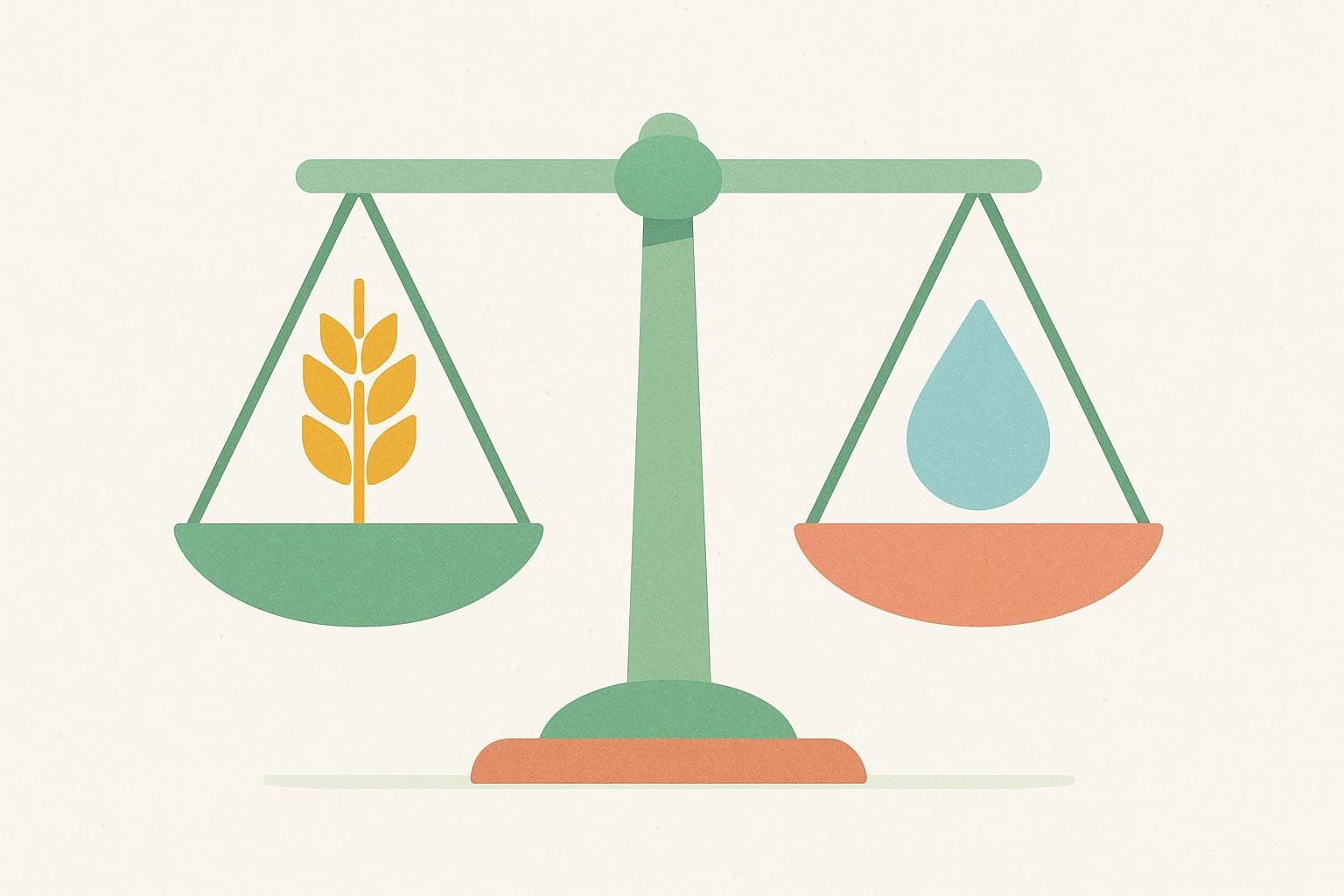
- Insulin‑to‑carb ratio (ICR): grams of carbohydrate covered by 1 unit of rapid‑acting insulin. Example: ICR 1:12 means 1 unit per 12 g carbs. A 60 g meal would call for 5 units using ICR alone. Ratios can vary by time of day—set this with your care team.
- Insulin sensitivity factor (ISF): how much 1 unit of insulin lowers your glucose. Used to calculate a correction dose when pre‑meal glucose is above target—combine with ICR if advised by your clinician.
- Glycemic index (GI) and glycemic load (GL): GI describes how fast a carb raises glucose; GL accounts for both speed and amount. Lower‑GI meals can smooth post‑meal spikes and may reduce insulin needs (2023 review).
Safety first: Dose changes should be supervised by your clinician. The ADA notes that using CGM or frequent self‑monitoring can help support these dosing decisions (ADA).
5) Kids and Family Meal Planning: Simple and Consistent
For children with type 1 diabetes, basic carb counting plus predictable meal/snack patterns helps school‑day management. Caregivers often pack familiar foods with labeled carb counts, share a simple list of lunch items with the school nurse/teacher, and keep quick 15‑gram carb options on hand for low blood sugar from activity (e.g., a small juice box, glucose tablets, or fruit snacks). Consistent carb distribution and communication with the school helps keep your child's blood sugar levels more stable and in a safe range (CDC; ADA).
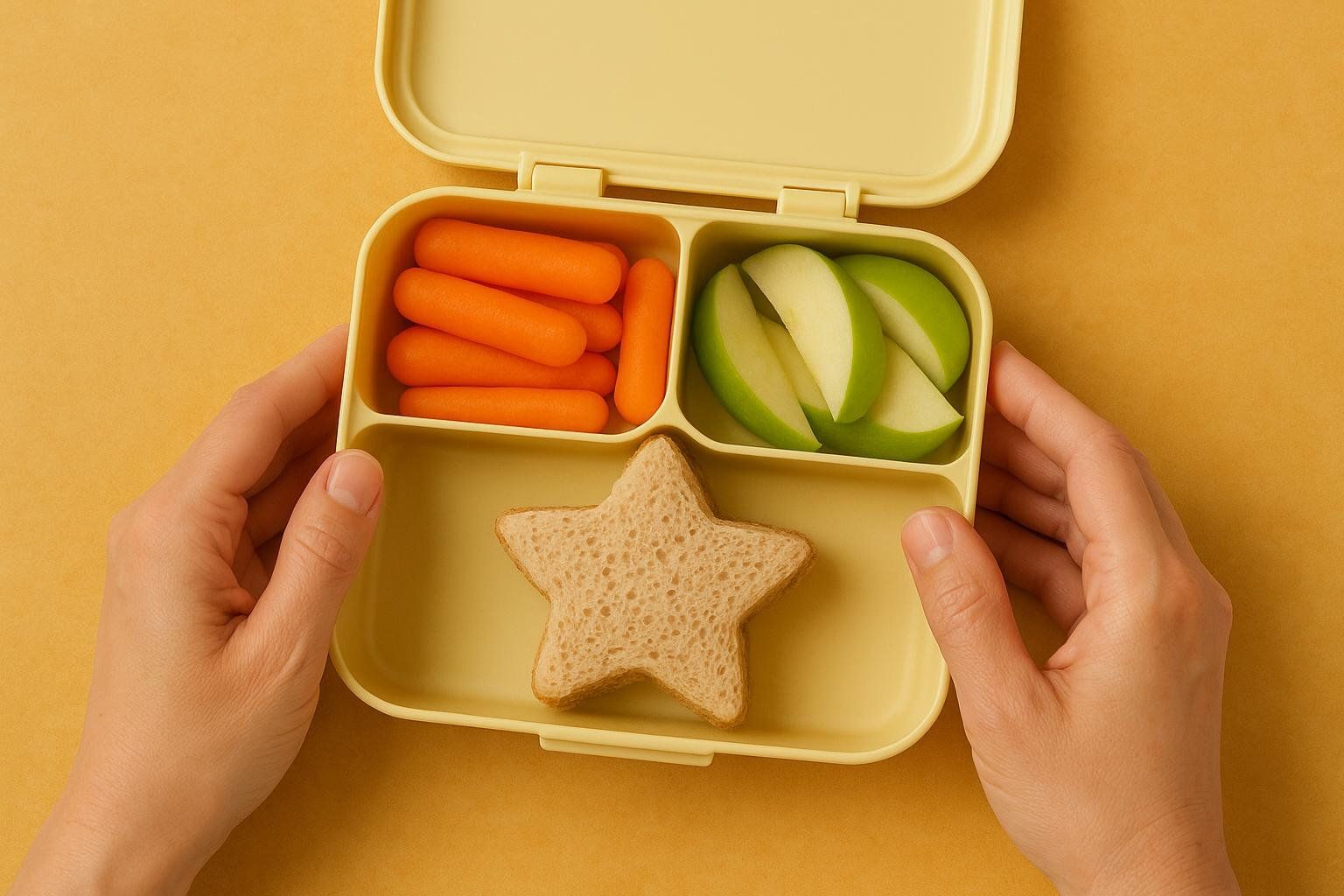
Family tips
- Keep a rotating menu of 5–7 packable lunches with known carb counts.
- Use the Plate Method for dinners and add a kid‑friendly fruit or milk as the carb quarter (CDC).
- Coordinate with school staff on carb counts and hypoglycemia plans.
6) Frequently Asked Questions
What’s a good daily carb target?
There’s no one‑size‑fits‑all number. Targets depend on body size, activity, glucose goals, and medications. A diabetes educator can personalize your plan—see the ADA’s recommendations and the CDC’s meal‑planning guidance.
Do I count “net carbs” or total carbs?
For diabetes carb counting, most educators use the label’s Total Carbohydrate. Some advanced plans adjust for very high fiber; follow your care team’s guidance. See MedlinePlus’ note to use Total Carbohydrate on labels.
How do protein and fat affect my glucose?
Protein and fat can slow digestion and shift the timing of carb absorption, sometimes moving glucose peaks later. Track patterns with CGM or your meter and discuss with your clinician (ADA).
Can carb counting help with type 2 diabetes?
Yes—basic counting helps you keep portions consistent and align with meds. Evidence for advanced counting in type 2 is emerging but less robust than in type 1 (2023 review).
7) A Simple 2‑Week Practice Plan
- Week 1: Use the Plate Method for all meals; log only carb foods and their portions. Aim for a consistent number of 15‑g “choices” at each meal (CDC).
- Week 2: Switch to gram‑based counting for 1–2 meals per day; note glucose before and ~2 hours after to learn your responses (CDC).
Keep it sustainable: favor minimally processed carbs, higher fiber, and lean protein. If you also track protein and fat, see our guides on tracking macros and what macros are.
8) Helpful Resources and Next Steps
- BodySpec tools and guides:
- Work with a Registered Dietitian Nutritionist (RDN) or Certified Diabetes Care and Education Specialist (CDCES) for individualized targets and insulin education; the CDC recommends DSMES services to tailor plans to your needs.
Once you’re comfortable counting carbs, it helps to see how your eating pattern affects your body. Pair your nutrition plan with objective body composition data. A BodySpec DEXA scan quantifies fat, lean mass, bone, and visceral fat, so you can see if your plan is preserving muscle while improving metabolic risk. Book a BodySpec DEXA scan and re‑test every 8–12 weeks to track progress.
